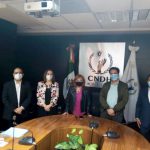Comparative Study of the Ombudsman’s Offices of the American Continent.
- 22 March, 2021
The Ombudsman’s Office of the City of Buenos Aires presented an analytical report on the official websites of their respective institutions.
The study included three principal practices: exploration of the universe of the Ombudsman’s Offices or similar institutions with different names present in the American continent, for which the official websites of each institution were used, especially the sections relating to history, functions, publication of annual reports, organization charts and links to existing regulations. Subsequently a more certain overview proceeded with two parallel research methodologies.
Executive summary:
Study of the 135 existing institutions in the Americas, surveys of 44 of them.
» Of the 135 institutions analyzed, 33 have national/federal jurisdiction,
» 61 are state/provincial/provincial/departmental and
– 41 are local or municipal
26% of the countries on the continent do not have such an agency in any jurisdiction.
20% of these countries do not have a national agency (the 6% difference being the United States and Canada, which only have one at the state and local levels).
Only 5 countries have autonomous institutions at the principal/departmental level: Argentina, Canada, United States, Mexico and Uruguay. At the same time, only 3 countries have them at the local/municipal level: Argentina, Canada and the United States.
8 out of 9 national agencies surveyed have decentralized delegations. 13 of the 16 provincial/departmental/state agencies surveyed have decentralized delegations. Locations range from 1 to 48 depending on the case.
Regulatory Framework:
» 68 % of the institutions find their legal nature in fundamental norms -constitutions, organic charters-,
» 31 % correspond to legislative norms -laws or ordinances- and 1% to Executive Power decree.
Authorities:
In the appointment process,
» 75% of the regulations establish that the head of the agency is elected by the Legislative Branch;
» 15% by the Executive Branch; 6% by the citizens; and 4% by other mechanisms.
4% by other mechanisms.
Among the cases that correspond to the Legislative Branch for the election, it appears that more than 50% in the three jurisdictions require 2/3 of the members or of those present in the chambers, while other institutions require a simple majority (simple plurality of votes) and absolute majority (more than half of the votes).
Another issue of relevance within the authorities is that of the Deputy Ombudsman or Regional Visitors.
In 61% of the institutions this figure is established in the regulations.
Only two regulations contemplate gender criteria in the election of deputies. And although in the surveys only 22% stated that they have them, 38% of the Deputy Ombudsmen elected at the time are women.
While 18% of the regulations do not provide information on the possibility of reelection of the heads of the agencies, 75% provide for it and 7% make it impossible.
Most of those that do provide for it, establish only one consecutive reelection.
Furthermore, of the total number of Ombudsmen surveyed throughout the continent, 49% are indeed women and the employed population throughout all the institutions is 51% women.
Structure
Budgetary allocation:
» 73% of the cases explicitly contemplate the manner in which each body obtains its budget, compared to 27% where such information does not emerge from the budget.
» 27% where such information does not appear in the legislative norm.
In 49% of the institutions’ regulations, autonomy is established, while in the other 13% such information is not included in the law.
While 69% of the regulations do not provide information on the legislative initiative as an institutional attribution, 31% clearly establish it.
Procedural legitimacy, although 60% of the regulations do not include this attribution in the law, in the other 40% it is established, although only 28% is pure and 12% is with at least one condition or restriction.
Mediation, conciliation and arbitration, while 71% of the regulations do not contain information on this attribution, in the other 29% it is contemplated, where 28% is “pure” and 1% is subject to restrictions or conditions.
59% OF THE AGENCIES HAVE THE POWER TO CARRY OUT INSPECTIONS, WHILE 14% MUST NECESSARILY GIVE PRIOR NOTICE TO THE AUTHORITY OF THE ENTITY TO BE INSPECTED, AND 6% MAY INSPECT WITHOUT NOTICE.
Average
Annual report.
The regulations reflect that in 93% of the cases they must submit such report annually and in 7% there is no information on the matter.
Predominantly, the most used social networks by all the surveyed institutions are
» Facebook with 84%,
» Twitter with 68% and
» YouTube with 52%.
Instagram is used by only 25% and to a much lesser extent LinkedIn and Google+. The channels used to accept claims, complaints or grievances, social networks drop to the bottom 59%.
The most used are
» Official websites 80%,
» mail 93%,
» telephone service 93% and
» in-person attention 100%.
National and international strategic alliances.
Of the total number of institutions surveyed (44) 68% are part of international organizations.
The international associations are.
» International Ombudsman Institute (IOI)
» Ibero-American Federation of Ombudsman (FIO)
» Andean Ombudsman Council (CADP)
» Association des Ombudsmans et Médiateurs de la Francophonie (AOMF)
» Latin American Ombudsman Institute (ILO)
Best practices developed:
Attention to the public.
► Prompt and early resolution of complaints or grievances: Alberta Ombudsman; Alska; Nova Scotia; Defensoría del Pueblo de Tandil.
► Community outreach for attention or outreach-outreach,-especially in disadvantaged populations: Ombudsman of Nova Scotia, Toronto, Comisión Estatal de DDHH del Distrito Federal, Defensoría del Pueblo de CABA, Córdoba, Neuquén, La Plata and Tucumán.
► Plain and accessible language: Ombudsman of Montréal; Toronto.
► Neighbor satisfaction surveys: Québec ombudsman.
► “No Wrong door” policy: guidance to every neighbor even when it is not one’s own institutional competence: Québec ombudsman.
► Establishment of 0800 toll-free line: Defensoría de la Plata.
Institutional strengthening:
► Depapelization: Defensoría del Pueblo de la Provincia de Buenos Aires; Nova Scotia Ombudsman.
► Information verification processes: Ombudsman of New Burnswick.
► Use of information technologies: Blogs and Social Media: Ombudsman of Montréal.
► Internal trainings: Ombudsman’s Office of Uruguay.
► Decentralization: Vicente López Ombudsman’s Office.
► Institutional gender policy: Ombudsman’s Office of Ecuador, Montevideo.
► Establishment or improvement of Working Agreements or General Work Guidelines: CEDDHH of the Federal District.
► Protocol for non-violence in the workplace: Ombudsman’s Office of the Province of Buenos Aires.
► Regulatory reporting policy: Ombudsman of New Brunswick.
► Transparency: Ombudsman’s Office of San Carlos Bariloche.
Strategic Alliances:
► Dissemination of information and institutional capacities towards municipal governments: Alberta Ombudsman; Ontario.
► Citizen Participation: Bolivian Ombudsman’s Office; San Carlos Bariloche; Vicente López.
► Relations and Networking with international organizations: Ontario Ombudsman.
More information:



